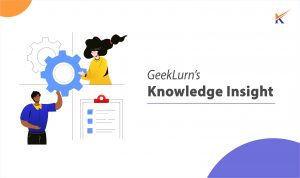Last Updated on: July 4, 2022
Product managers are the trunk of organisations who hold the major methodology and build the framework for any business hierarchy. We get you 11 questions about Scrum and Agile Way of doing product management which will definitely help you to understand the theory.
Table of Contents
Why Product Manager interview questions matter?
Before we get to the questions let us first understand why these questions matter in the first place. Product managers could come from a diversity of backgrounds. Their roles & job descriptions can also vary. Some roles may require someone who is a technical whiz, while another may need someone who has the necessary marketing chops. Basis the exact role, therefore, the right fit of the candidate needs to be found. The interviewer may want to touch upon the following categories of questions:
- Strategic thinking ability
- Marketing strength
- Technical ability
- Research mindset
- Communication ability
- Conflict resolution skills
- Product management experience
- Problem solving abilities, and more
What are some interview questions for product managers?

Q1. What is the difference between Scrum and Agile Framework?
Ans : Agile:
- Agile is a set of principles and values which follows the iterative methodology and has an incremental framework
- Agile software development only fits into an environment, where the team is small with higher expertise.
- The agile process encourages leaderships, and leaders play a major role.
- In terms of flexibility, Agile is more stringent than Scrum.
- Agile formulates everyday standups where face to face interaction is involved in the day to day basis for cross-team functionality.
Scrum:
- Scrum is one of the implemented methodologies of Scrum, and the delivery is done on a weekly basis.
- Scrum comes into place where rapid and regular changes take place within the team and project.
- Unlike Agile Scrum doesn’t allow domination, rather allow self-organisation and cross-functionality.
- Scrum is not stringent like Agile, allows more room for adaptability.
- In Scrum, the standup happens daily within the collaboration of Scrum master, product owner and other members where roles are fixed.
Q2. Under what circumstances Agile principles can be implemented.?
Ans: The Agile framework can be implemented under the following circumstances:
- When the projects seem to be large and complex.
- When the requirements are not adhered to any specifications and goals are long term.
- When the budget is not time stringent and bounded.
- When a lot of changes are a requirement within the process and in more frequency of changes is more.
- When the delivery demands not to get delayed and has to be continuous.
Q3. What do you mean by “Sprint” and “iteration” in terms of Scrum and Agile?
Ans: Sprint: When a group of individual are working in a team for a project, they develop a productivity technique called a sprint. The lifetime of a sprint is generally 7 days. A sprint is planned out, accessed with standups and reviewed periodically.
Iteration: Iteration is a process where the project is divided into a smaller section; those sections are called iteration. Iterations are a part of incremental development. The relation between sprint and iteration can be defined as -” All sprints are iterations, but all iterations are not sprints.”
Q4. Define “Kanban” in Product management
Ans: Kanban has originated from the Japanese term “Kamban”; it means billboard. The word signifies “available capacity” and “Just in time”. The concept takes the context of (when to produce, what to produce, and how much to produce”) in any organisation.
According to DJA:
Kanban is not a software development lifecycle methodology or an approach to product management. It requires that some process is already in place so that Kanban can be applied to change the incrementally underlying process.
Q5. What does the word “Velocity” signify in terms of Agile?
Ans: Agile Velocity is defined as the amount of work done per unit sprint. In other words, The time taken to complete a whole backlog by the team in an amount of time.
Calculating Sprint 01 Velocity in Agile Scrum
- Assuming that in sprint 01, team committed to a total of 6 user stories
- Story point of each of the user story = 7 story points
- Total story points committed by the team in sprint 01 = 42 story points
By the end of sprint 01 teams completed 3 out of 6 user stories
- Total user stories completed in sprint 01 = 3 user stories
- Total story points completed in sprint 01 = 3 x 7 story points -> 21 story points
Calculating Sprint 02 Velocity in Agile Scrum
- Assuming that in sprint 02, the team committed to a total of 8 user stories
- Story point of each of the user story = 7 story points
- Total story points committed by the team in sprint 01 = 56 story points
By the end, sprint team completed 5 out of 8 user stories
- Total user story completed in sprint 02 = 5 user stories
- Total story points completed in sprint 02 = 5×7 story points->35 story points
Calculating Sprint 03 Velocity in Agile Scrum
- Assuming that in sprint 03, team committed to a total of 9 user stories
- Story point of each of the user story = 7 story points
- Total story points committed by the team in sprint 03 = 63 story points
By end sprint 03, the team completed 6 out of 9 user stories
- Total user story completed in sprint 03 = 6 user stories
- Total story points completed in sprint 03 = 6×7 story points->42 story points
Calculating Average Velocity of Sprints
Once you know the Velocity of past three sprints, calculate the average of them. Let’s assume your previous sprint velocities were [completed story points in each of the sprints]
- Sprint 01: 21
- Sprint 02: 35
- Sprint 03: 42
So your average Velocity of sprint is 21+35+42/3=70.
Q6. What are the essential characteristics of a good product backlog:
Ans: A product backlog is simply the list of all items and requirements for a project in terms of user stories. The items are generally technical or can be user-centric.
The characteristic of a good product backlog is supported by a term called DEEP:
D: Detailed appropriately
E: Emergent
E: Estimated
P: Prioritised.
Q7. What are some essential characteristics of a good Product owner?
Ans: A good product owner:
- creates a high-level release plan.
- Generates an efficient communication, vision, strategy and roadmap.
- Look into subjected reviews and carry out development plans for customers accordingly
- Proactively support business development metrics.
- Collaborates with team to carry out a successful delivery.
- Decisive, available and get into active engagement with the project to help out the team till the end
The above product owner interview question is often asked to see the depth of knowledge that the interviewee has.
Q8. What do you mean by “user story” in Scrum?.
Ans: A user story is basically a simple and short description of the feature explained from the point of view of the client.
It explains about, the requirement, format of requirement and reason for the requirement.
Syntax of a user story can be written as
As a <user/type of user>
I want
so that
Q9. What is the difference between a Product Manager and Product Owner?
Ans: Product manager: Product managers look into the development and are reasonably responsible for customising vision, building a strategic roadmap and look into business outcomes. The map company objectives to successful market delivery.
Product Owner:
Product owners work with cross-functional Agile teams and convert the strategies into actions. The Product Owner keeps an eye and makes sure the objectives are getting fulfils to end up in fruitful implementations.
Q10. Name a few backlog prioritisation technique
Ans: These are the few backlog prioritisation techniques,
- moSCow method
- KanoModel
- Cost of delay
- Stack ranking
- Walking skeleton
Q11. Name some popular Agile frameworks.
Ans: Here is the list of a few Agile frameworks that come in handy when you are answering agile product manager interview questions.
- Scrum: It is the most important Agile framework
- Kanban
- XP
- FDD
- Crystal
- DSDM
Armed with these product management interview questions, we are sure you will crack your dream assignment!






